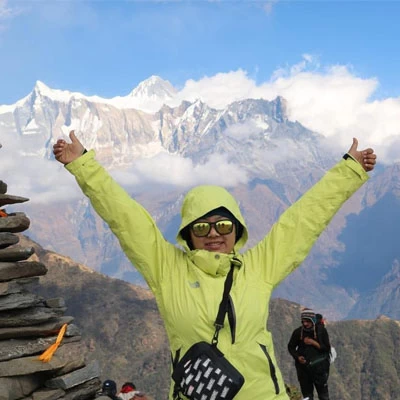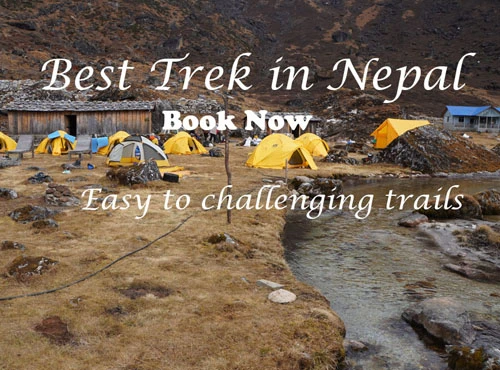Island Peak, which lies in the Khumbu region of Nepal, is a beautiful Journey that will lead you to one of the most amazing places in the world. The summit of Island Peak, which stands at an altitude of 6184 m, offers a magnificent view of the surrounding snowcapped mountains. This article provides information about the different seasons to climb Island Peak, which will help interested climbers begin their journey to Island Peak.
Best time to climb Island Peak
Table of Contents
Spring season (March, April, and May)
The months of March to May are referred to as the spring season in Nepal. The winter just ends and the weather starts to warm up, making it reasonable to climb Island Peak. It is the trekking and expedition season. The number of tourists during these months is very high. The main reason is the weather. The weather is usually dry and stable, the skies are clear, and the view is beautiful. The hills will be covered with rhododendron flowers of different colors, making your journey more memorable.
What to expect during the spring season while climbing Island Peak?
- The spring season offers mild temperatures that range from 10°C to 15°C (50°F to 59°F) during the day. The temperature is comfortable for climbing the Island peak.
- During the spring season, the skies are clear and the views are exceptional, providing an opportunity to witness the awe-inspiring vistas of the neighboring peaks. The panoramic view of Mount Everest, Mt. Lhotse, Mt. Nuptse, Mt. Ama Dablam, and other majestic mountains in the region can be seen.
- The blooming Rhododendrons with different colors of red, pink, and white that cover the hills provide stunning beauty during the spring season.
- In spring, the days are longer, which offers climbers more hours of daylight. This helps to manage the time and enhance flexibility in planning the Island peak ascent.
- Spring being the peak climbing season, support services will be conveniently accessible. Guides, porters, and Lodges are well-prepared to accommodate climbers. The abundance of services ensures that you will be provided with essential aid and resources throughout your journey.
Autumn season (September, October, and November)
The months of September to November are referred to as the autumn season in Nepal. The autumn season is also the peak tourist season in Nepal, as the weather during these months is dry and stable. The biggest festivals of Nepal, Dashain and Tihar, also fall in the months of October and November. You can enjoy the festival with locals putting on red tikas on their foreheads.
What to expect during the autumn season while climbing Island Peak?
- Autumn presents typically steady and enjoyable weather conditions. The skies are usually clear with a low chance of rainfall.
- During autumn, the Himalayan peaks and landscapes offer breathtaking vistas. The clear skies provide an exceptional view, allowing you to relish panoramic views of renowned peaks such as Mt. Lhotse, Mt. Nuptse, Mt. Ama Dablam, and the awe-inspiring Mount Everest.
- The pleasant temperatures during autumn contribute to favorable climbing conditions, making it more comfortable to navigate the higher altitudes when compared to the colder winter months.
- Being the peak season for trekking and climbing in Nepal, autumn attracts a significant number of visitors, ensuring a comprehensive range of services are readily accessible along the trekking route.
Winter season (December, January, and February)
The months of December to February are referred to as the winter season in Nepal. During these months, it is extremely cold, making it difficult to climb Island Peak. The lodge owners shift to the lower part to avoid the extreme cold. It is highly recommended not to go for the Island Peak climb during the winter season. However, the climb can be carried out until the middle of December.
Rainy season (June, July, and August)
The months of June to August are the rainy season, also known as the monsoon in Nepal. During these months, you can find a green and foggy environment. If you enjoy the rain, then this season is for you. But don’t forget to carry the rain gear with you. This season is also not recommended for Island Peak due to the high risk of natural calamities such as floods and landslides.




